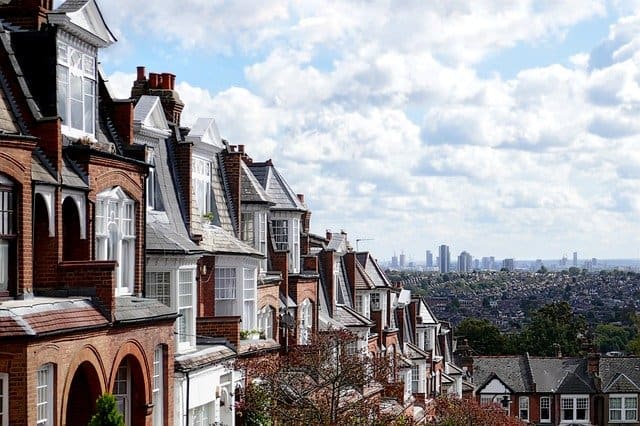
How to Fix Damp Problems
Due to the wet climate in the UK, damp is often a common occurrence in British properties. Problems that are caused by excess moisture, however, can lead to serious structural issues if left untreated and can even become hazardous to your health. If you own or are considering purchasing a property with damp issues, it’s important to understand the different types of damp, what causes it, how to prevent it, and how to fix it.
What are the Common Causes of Damp in Houses?
Many damp problems in UK homes are due to rain penetration and condensation. However, damp can be caused by a number of issues in the home. Some of the most common reasons for damp in a property include:
Damp and Leaks:
A leak can often be a major cause of damp in a property and can lead to further issues such as wet rot and penetrating damp. Damp that is the result of a leak will typically be localised to one area of the wall. If you have noticed a damp patch in the same place, it’s worth examining the downpipes and gutters that are in the affected area. Check to see if there is any water escaping, or if the water management systems are faulty. Check for any damage, cracks, or faulty joints on pipes in the area as there may be an obvious reason for the leak. Ensure that drains and downpipes are not blocked since rainwater can very easily become backed up due to a blockage, leading to it forcing itself out of a pipe joint within the affected area. If the damp is appearing below a window, inspect the window frame and window ledge since badly fitted windows can allow damp to penetrate into a room and the internal plaster around the window will be affected.
Bridged Damp Proof Course:
If you are on the ground floor of the property and there is damp that appears to be localised to the bottom of the walls, this is likely to be due to a bridged or potentially faulty damp proof course, which will result in rising damp. If the damp proof course has been bridged, consider if there is anything that may have caused this such as a new patio or flower bed in the area causing an excess amount of soil to bridge the course. You could solve the issue by lowering the ground level or removing the feature before allowing the area to dry out. If the damp proof course has not been bridged, it is likely that it has failed, in which case you will need to have it replaced by a qualified damp treatment professional.
Damp and Condensation:
Most causes of damp inside the home do not actually originate from outdoors. In fact, over the past two decades, condensation has been the leading cause of damp in UK homes. Condensation occurs when large amounts of water from our everyday living activities become trapped within a property. This could be from activities such as cooking, washing, or simply breathing. When the warm and moist air that these activities produce come into contact with the cooler surface on the internal walls, the result is condensation, which can lead to black mould if left untreated. Consistent heating and good ventilation is the key to preventing condensation in your property.
How to Identify Damp Issues – Do I Need a Damp Inspection?
Often, the smell will be the first thing that you will notice if you are inside a property that has serious damp issues. It has a very distinctive smell that is quite earthy and musty. However, this odour will usually only be present when the damp is quite bad. Thankfully, most types of damp are fairly easy to identify just by looking at the area. Dark mould spots on the walls are a sure sign of damp, along with yellowish stains. Anything that looks like a watermark on the wall may be caused by damp. If there is wallpaper or paint present on the wall and it has become crinkled, this is another sign that could indicate damp is present.
If you are unsure or want to learn more about how bad the damp has gotten in a property or where it is present, a professional damp inspection is the best option.
Types of Damp to Look Out For:
There are three common types of damp that affect homes in the UK. These are condensation, penetrating damp, and rising damp.
Condensation:
Damp problems linked to condensation can happen anywhere in the home, but they are typically more common in rooms where there is a lot of moisture such as the kitchen or bathroom. It occurs when the warm moisture in the air makes contact with cold walls and condenses back to the water.
Penetrating Damp:
Penetrating damp happens in the home when moisture makes its way through walls via gaps, cracks, leaky roofs or poorly sealed windows. The damp will usually appear at around the same point as the water that is finding its way into the building. This type of damp is almost always the result of poor maintenance including blocked drains, cracked brickwork, and leaking gutters.
Rising Damp:
Modern properties are built with damp proofing, so this type of damp is more commonly seen in older buildings. Since bricks are porous and allow water to pass through, it is possible for damp to travel through and up the wall. This damp starts at the ground level and slowly soaks upwards.
Find a Damp Inspection Near Me – Prevent Damp-Related Illnesses:
Damp is not only a problem that can be unsightly, smelly, and lead to structural issues in your home. If damp is left untreated, it can become an issue for human health as well as a problem for your house. Damp is linked to several respiratory issues and can be especially dangerous for people who already have respiratory conditions such as asthma. People who are regularly exposed to damp have a higher risk of developing asthma, allergies, and respiratory infections, and it can impact the health and strength of your immune system. This is why it’s so important to ensure that all occurrences of damp in your home are correctly identified and treated as quickly as possible.
Solving Damp Problems:
The first step in solving a damp problem in your home is to identify the type of damp that you have and what is causing it. If you have penetrating damp, this will usually be resolved by improving your home maintenance such as replacing broken gutters or patching holes and cracks in the brickwork.
If you are suffering from rising damp in your home, you will need to check the damp proof course if one is present. In homes that have a damp proof course, rising damp is often a sign that the course is bridged or is faulty, and this will need to be checked by a damp expert in most cases. If you do not have a damp proof course, you should have a professional apply a damp proof membrane or another type of damp proof course to your walls.
If the damp issue in your home is a result of condensation, a dehumidifier can provide some resolution. However, a dehumidifier alone is unlikely to provide a long-term solution, so it is worth looking at installing better ventilation in your home to stop the damp issues from getting worse.
Bear in mind that damp is a problem that will not go away on its own and is likely to continue getting worse if left untreated. As a result, it’s best to get it dealt with as soon as possible after noticing the problem. The age and structure of your building may need to be factored in when it comes to how you approach solving damp problems, especially if you have damp in a listed building.
Treating Damp Internal Walls:
Once you have identified the source of the damp and solved the problem to prevent the damp from worsening, you will need to repair any cosmetic damage on the internal walls. You cannot just paint over walls that have been affected by damp as the paint will not usually stick to the area very well.
Firstly, thoroughly clean the area using soapy water. You may also need to sand the area down to achieve a flat finish again. Leave the area to completely dry out before painting, which could take weeks. Keeping the room warm will speed up the process.
Only after these steps have been completed should you attempt to paint or wallpaper over the area. It’s also recommended to coat the area with a specially designed damp seal undercoat or paint before painting or wallpapering to prevent future problems and ensure that you have the best surface to work with.
Condensation is the most common cause of damp in the UK, although the wet climate can lead to many instances of penetrating damp in homes that are poorly maintained. To solve damp problems at home, it’s important to identify why the damp is occurring and fix the root of the problem.

